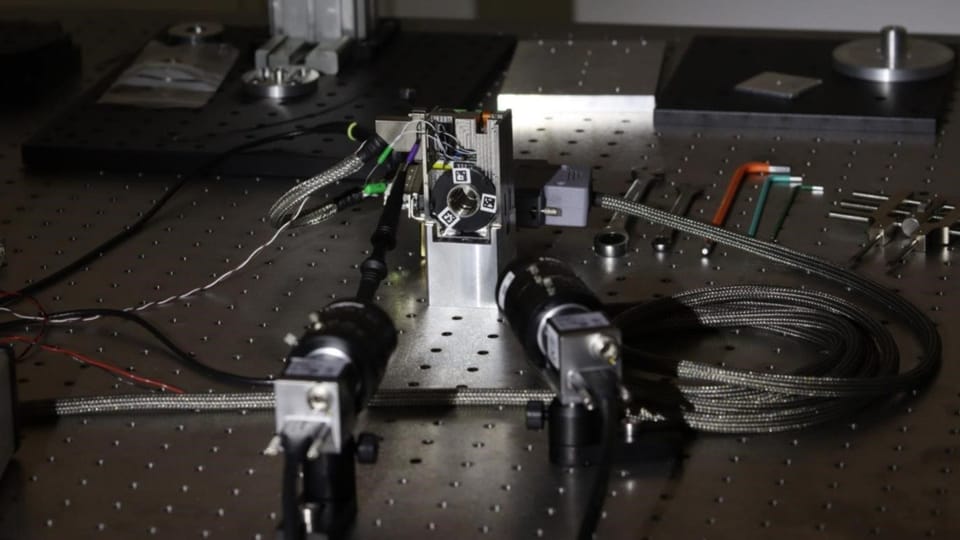
Photo: Jan Ebr, Czech Academy of Sciences
Experts from the Czech Academy of Sciences have presented their first contribution to the LISA space mission. Approved by the European Space Agency (ESA) a few days ago, the Czech component will be crucial to the functioning of the giant satellite system, which aims to measure gravitational waves.
LISA, standing for Laser Interferometer Space Antenna, is a space-based gravitational wave detector that uses precision lasers to do its job. Or at least, it will once it is finished – the mission is scheduled to launch in the mid-2030s.
Consisting of three spacecraft separated by millions of miles and arranged in a triangle, LISA will trail behind the Earth as it orbits the sun. These three spacecraft will relay laser beams back and forth between each other, and the combined signals will search for gravitational wave signatures that come from distortions of spacetime.
The technology developed by Czech scientists will be in charge of switching between the main and backup laser and will be critical to the functioning of the entire system, says Asen Christov from the Institute of Physics.
See the rest here.
Authors: Anna Fodor, Martin Srb, Sources:iROZHLAS.cz,NASA

